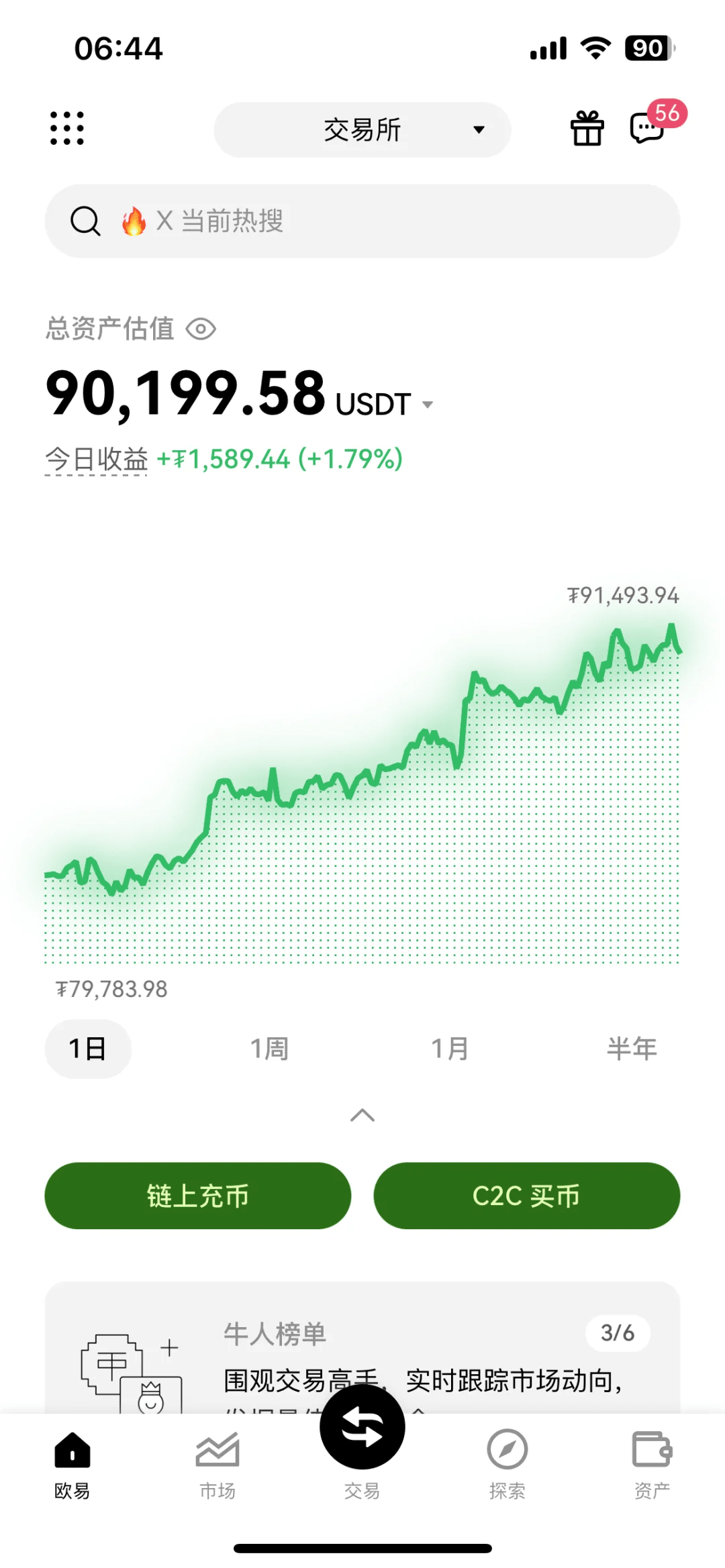You might scold me for bragging — but I really turned $300 into $500,000 in the contract pool. After three liquidations left me with nothing, I came up with these 'bloody rules' that kept me alive.
I've seen too many people turn thousands into hundreds of thousands, only to end up back to zero in the end. Contracts are not investments; they are dancing with shackles: either you soar with the market or you fall into the abyss without a trace.
When I had only $300 left for food, I relied on 100x leverage to roll my account, and in 3 months, I turned it into $50,000. But today I won’t talk about how to get rich quickly; instead, let’s discuss how to survive in this meat grinder and walk away with money — after all, those who can leave with profits are the true winners.
1. The core of rolling small funds: it's not about betting on direction, it's about welding desires to the rules.
I started with $200 to test the waters, opening only $10 contracts with 100x leverage each time. Don't think that 100x leverage is for gamblers; its underlying logic is 'small bets for big gains': if the direction is right, a 1% gain means doubling the principal. I set a strict rule for myself: when I make a profit, I must withdraw half, and continue to roll the rest, never being greedy even if it's just mosquito meat.
Theoretically, rolling continuously for 12 times, $10 can grow to $10,000. But 90% of people fail at three hurdles: wanting to earn more after making a profit, leading to profit reversal; unwilling to accept losses, increasing positions stubbornly; switching between long and short, getting slapped in the face by the market. I survived, thanks to engraving 'take profit and stop loss' into my DNA — before opening a position, think clearly: how much can I lose at most? How much profit must I take? If you can't figure it out, don't act.
2. Four bloody life-saving rules; stop trading for three days after one mistake.
1. Must cut losses at the stop-loss point, even if it rebounds right after cutting.
I experienced two early liquidations, all because I 'thought it would rebound' stubbornly. Later, I established a strict rule: as soon as it hits the preset stop-loss level, regardless of how unwilling I am, click to close immediately. Remember: there are no 'pities' in contracts, only 'survival' — keeping the principal means having a chance to recover next time; holding positions until liquidation means losing the qualification to turn the tables.
2. Stop after losing 5 times in a row, absolutely do not touch the market that day.
The market often has 'irrational' moments, and the mindset can collapse during continuous losses, leading to more mistakes. I set up a 'circuit breaker mechanism': if I make 5 consecutive mistakes in a single day (even if each time only loses $10), I immediately close the software, and no matter how enticing the opportunities are that day, I won’t act. Several times, this trick helped me avoid subsequent chain liquidations.
3. Must withdraw profits when reaching $30,000, never cling to the battle.
Greed when making money is more deadly than panic during losses. I set a rule: when the account profit reaches $30,000, I must withdraw half of the profit. During last year's Bitcoin one-way market, I started from $800 and rolled to $300,000 in 5 days, but withdrew $150,000 in the process — this step allowed me to preserve most of my profits during the subsequent pullback, unlike others who 'rollercoasted' back to zero.
4. Only trade in clear trend markets, play dead during consolidation periods.
Using 100x leverage in a consolidating market is like crossing the road with your eyes closed. I once stayed in cash for 3 months, just waiting for a clear one-way signal. Don’t think about 'seizing opportunities' every day; real big money is made by waiting: usually remaining as calm as a rock, and when the opportunity comes, you strike hard, which makes the earnings steadier.
3. Can I enter the market now? First, pass these three hurdles before acting.
People always ask, 'Can I trade contracts now?', my answer is: first ask yourself three questions —
Can you accept the outcome of 'making money 10 times, losing it all once'? (The nature of high leverage is just like this.)
When the trend hasn't emerged, can you resist the urge to operate for a week? (The consolidating market is the graveyard for contracts.)
After reaching the profit target, can you decisively withdraw half the profit? (Greed is the biggest trap.)
If the answer to all is 'yes', you can use $500 to experiment; if there's any hesitation, I advise you to honestly hold coins — contracts are never meant for those fantasizing about getting rich; they are paths reserved for those who can control their desires and follow the rules.
Finally, let me say something heartfelt: from $300 to $500,000, I never relied on insider information, nor did I calculate K-lines; I only did one thing right — treating the above 4 rules as a sacred decree, punishing myself to stop trading for three days after one mistake.
The secret to getting rich with contracts has never been leverage; it’s the execution power of 'cutting off greed when it's time to stop, holding back hands when it's time to wait, and never hesitating when it's time to stop loss.'
Follow me, and tomorrow I will discuss how to use Excel to calculate positions, allowing small funds to roll while striving for profit without risking a total loss. Remember: in the contract pool, those who survive long enough can wait for their own wave.
#美国7月PPI年率高于预期 #币安钱包TGE #加密市场回调

